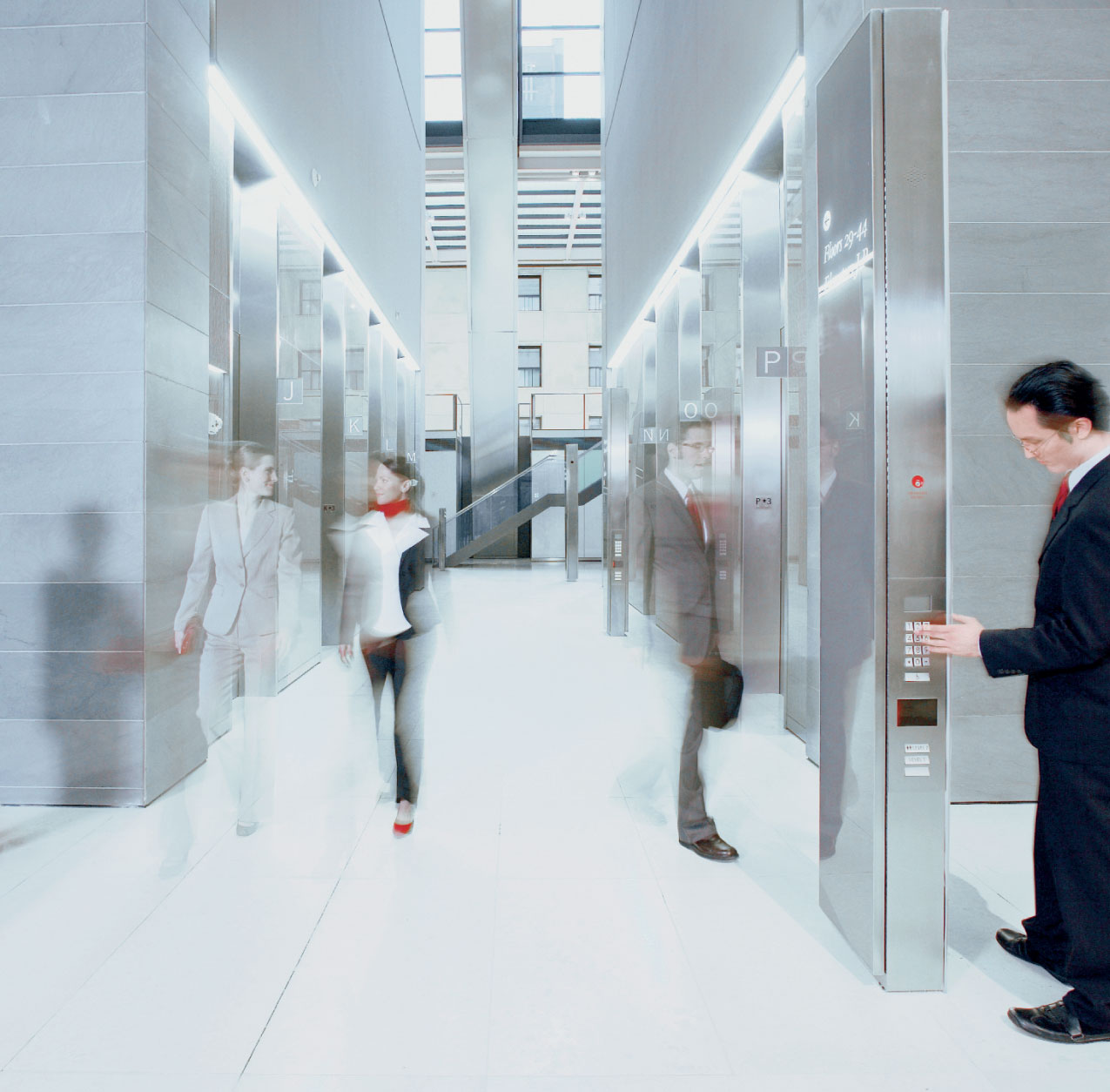Elevators that know what floor you want to go to without you even pressing a button and that switch shafts; Jeroen de Jong believes elevators, not in the least the ones in EEMCS building, can become much more efficiënt.
If you think elevators are simple machines on which people simply hop on and off, think again. In many high rises sophisticated software regulates what elevator stops at what floor, sometimes ordering a lift to skip people on its way up or down, all in order to minimize the overall average waiting time.
“If only the lifts at the EEMCS faculty building could also be equipped with some smarter software, that would really improve the working conditions of the staff”, Phd Student MSc. Jeroen de Jong sighs.
Later this month De Jong, who worked at the algorithmics group at EEMCS faculty, will defend his PhD thesis about elevator dispatching.
“Nowadays, if you need to go from the first floor, where the canteen is situated to the twentieth floor, just after lunch time, you have a problem”, the researcher continues. “You will stop at nearly every intermediate floor.”
De Jongs simulations show, amongst others, that the average waiting time in the faculty could be decreased with five to ten percent with some relatively minor adjustments.
What may even be more important however; the extremely long travelling times people may experience when they need to go all the way up will be much diminished.
But how can these improvements be achieved? With dynamic problems like elevator dispatching the situation changes continually. For example, you may assign passengers to elevators in a manner that seems optimal now, but a new passenger presses a button three seconds later, making you think: if I had known this before, I would have made a different schedule.
De Jong: “As a general rule you can say that elevator performance increases when information is provided earlier or more detailed, and when the timing of assignment decisions is more flexible. This plays a larger role as traffic pressure increases.”
The rule ‘get information early, decide late’ can best be applied with so called destination control, where the traveler doesn’t just call an elevator by pressing a button corresponding to the desired travel direction, but indicates his desired destination floor instead. He is then directed to a specific elevator by the dispatching system. This dispatching system can group people together that need to go to floors situated near one another.
If it were up to De Jong, the EEMCS faculty building would be equipped with such a dispatching system.
But all of these techniques are peanuts compared to what elevator manufacturers are devising. “Elevator manufacturers are entangled in a commercial battle to develop even more refined elevators that use all kinds of tricks to become more efficient”, says De Jong.
He witnessed this business – “full of distrust, and even, sometimes, espionage” – from close when he was an intern at Schindler, one of the world’s largest elevator manufacturers.
“This quest makes sense. The stakes are high. Take the high rises in business districts; some of them have as many as sixteen elevators. Think of all the extra highly valuable floor space you obtain if you have an elevator system that functions just as efficiently with say twelve elevators instead. The company that develops this is cashing in.”
The most peculiar invention that caught De Jongs eye when he worked at Schindler, was an elevator system comprising of several lifts that shared a main central shaft and that could spread out to several other shafts on each side. No vertical cables were involved here, each elevator had its own engine and propulsion system with magnets. Using the central shaft the elevators could overtake one another. Talking about flexible.
“A lot of work was put into this concept. It seemed promising from a technical point of view. But the concept ended up in a drawer. People would find these elevators to creepy since they could theoretically crash on one another, or so was the general idea.”
Future systems, in which the passenger could be assigned to a specific elevator at the latest possible moment, just prior to boarding, via a smartphone for example, could also increase the performance.
But the ultimate elevator fantasy would entail employees (who generally go to the same floor every day) to wear tags (like RFID) that can be read by devices in the corridors and halls. “This could allow the elevator system to make guesses about hall calls in the near future, as well as likely destinations for the people behind those calls.”
Dr. Jeroen de Jong, ‘Heuristics in dynamic scheduling. A practical framework with a case study in elevator dispatching’, defense 28 November.
De Jong combined his PhD work with a career as a researcher at defence company Thales. Defence company Thales and elevators, what is the connection here? “I used elevators as a case study, but my research was about heuristics in dynamic scheduling. Scheduling consists of putting tasks on a timeline, subject to various constraints and optimization criteria. So this is something which is also very interesting for the defence industry. I just happened to focus on elevators.”



Comments are closed.